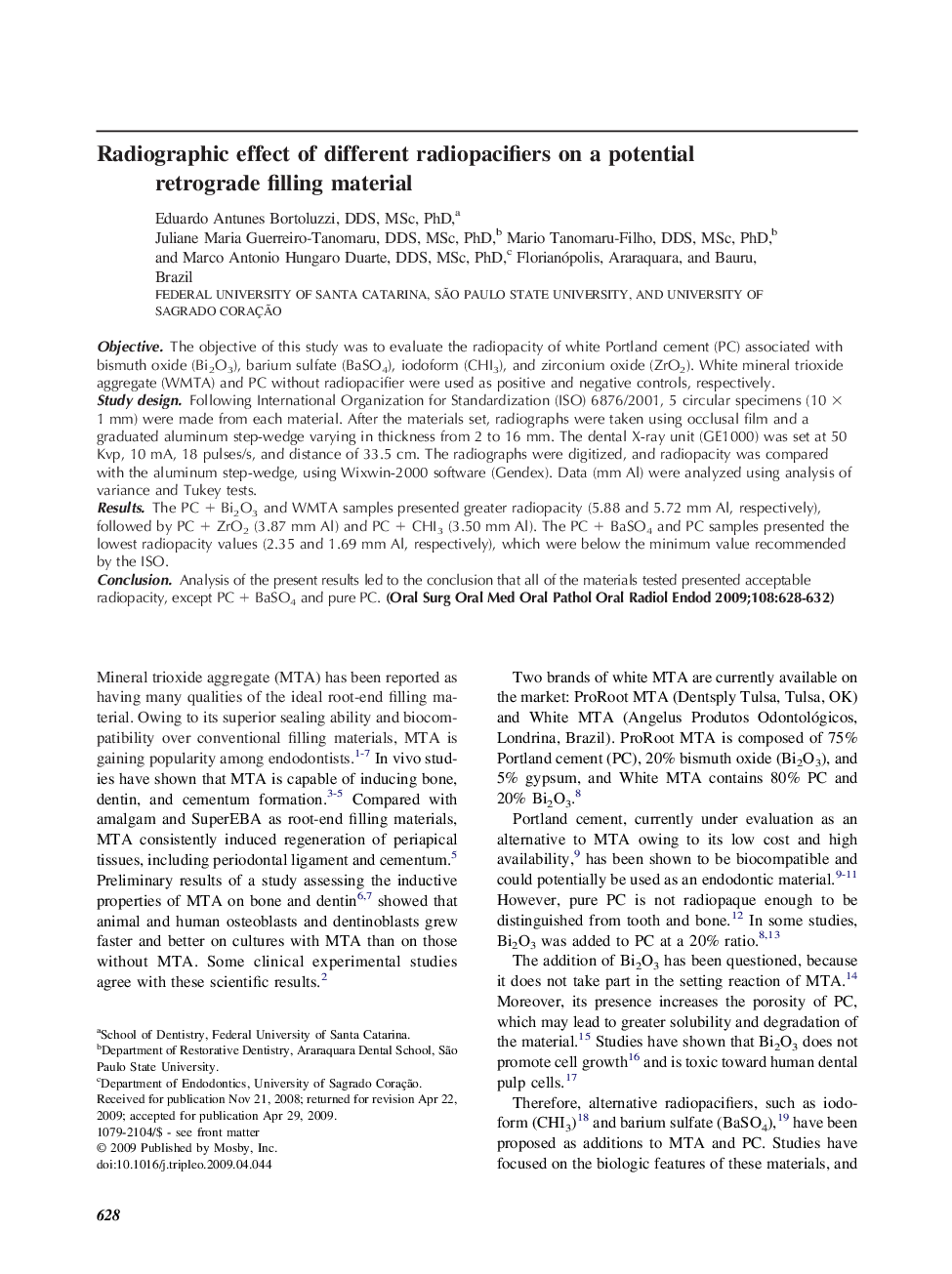| Article ID | Journal | Published Year | Pages | File Type |
|---|---|---|---|---|
| 3167940 | Oral Surgery, Oral Medicine, Oral Pathology, Oral Radiology, and Endodontology | 2009 | 5 Pages |
ObjectiveThe objective of this study was to evaluate the radiopacity of white Portland cement (PC) associated with bismuth oxide (Bi2O3), barium sulfate (BaSO4), iodoform (CHI3), and zirconium oxide (ZrO2). White mineral trioxide aggregate (WMTA) and PC without radiopacifier were used as positive and negative controls, respectively.Study designFollowing International Organization for Standardization (ISO) 6876/2001, 5 circular specimens (10 × 1 mm) were made from each material. After the materials set, radiographs were taken using occlusal film and a graduated aluminum step-wedge varying in thickness from 2 to 16 mm. The dental X-ray unit (GE1000) was set at 50 Kvp, 10 mA, 18 pulses/s, and distance of 33.5 cm. The radiographs were digitized, and radiopacity was compared with the aluminum step-wedge, using Wixwin-2000 software (Gendex). Data (mm Al) were analyzed using analysis of variance and Tukey tests.ResultsThe PC + Bi2O3 and WMTA samples presented greater radiopacity (5.88 and 5.72 mm Al, respectively), followed by PC + ZrO2 (3.87 mm Al) and PC + CHI3 (3.50 mm Al). The PC + BaSO4 and PC samples presented the lowest radiopacity values (2.35 and 1.69 mm Al, respectively), which were below the minimum value recommended by the ISO.ConclusionAnalysis of the present results led to the conclusion that all of the materials tested presented acceptable radiopacity, except PC + BaSO4 and pure PC.
